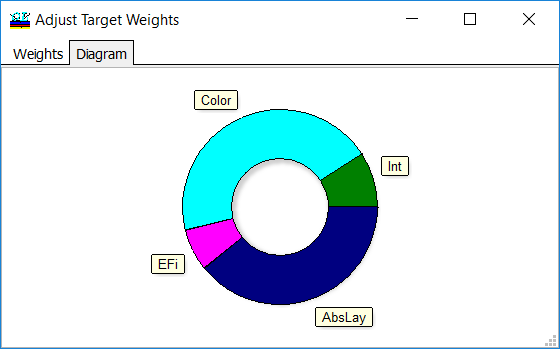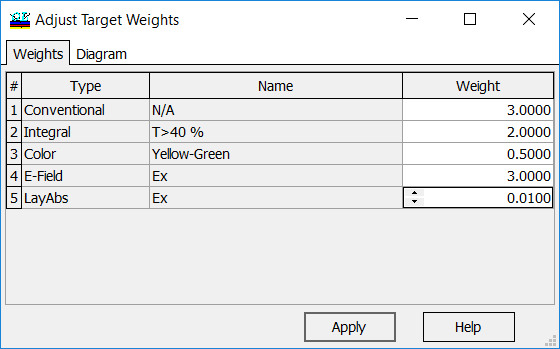|
OptiLayer allows combining targets of different types, namely conventional targets (also range targets), integral targets, color target, electric field target and layer absorbtance target. Resulting Merit Function value is computed with formula: \[MF^2=w_1 MF_{conv}^2+w_2 MF_{col}^2+w_3 MF_{int}^2+ \] \[+w_4 MF_{EFI}^2+w_5 MF_{LA}^2+w_6 MF_{Th/Stress}, \] where \(w_1, w_2, w_3, w_4\) and \(w_5\) are target weights. Adjust Target Weights dialog allows you to change relative weight of every target loaded to memory. It is convenient and simple way to adjust the importance of different requirements in complicated problems. In the diagram tab the contribution of each term is displayed. Adjusting weights it is possible to control the relative importance of different target requirements in multi-criteria design problems. |
|
OptiLayer provides user-friendly interface and a variety of examples allowing even a beginner to effectively start to design and characterize optical coatings. Read more…
Comprehensive manual in PDF format and e-mail support help you at each step of your work with OptiLayer.
If you are already an experienced user, OptiLayer gives your almost unlimited opportunities in solving all problems arising in design-production chain. Visit our publications page.
Look our video examples at YouTube
OptiLayer videos are available here:
Overview of Design/Analysis options of OptiLayer and overview of Characterization/Reverse Engineering options.
The videos were presented at the joint Agilent/OptiLayer webinar.


